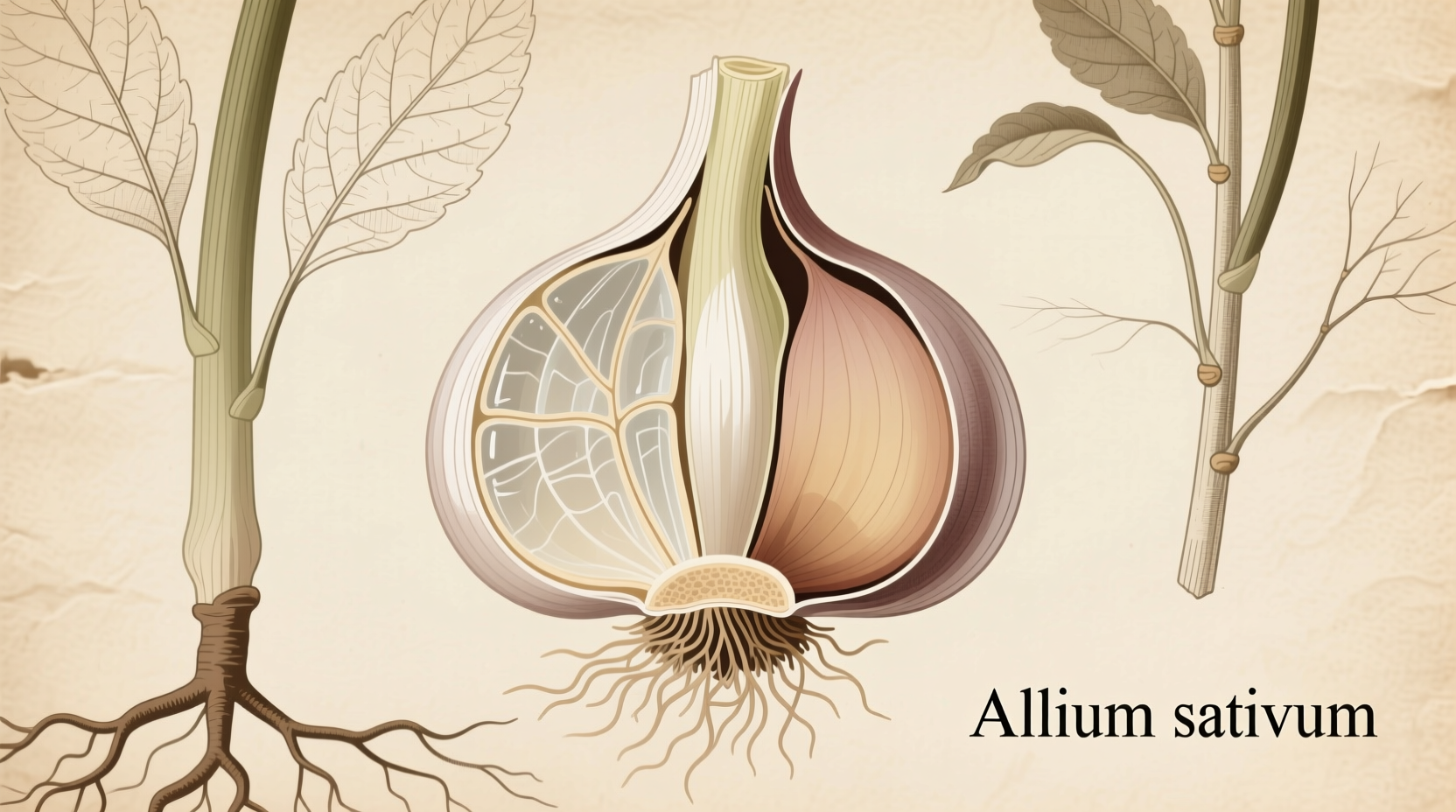The scientific name for garlic is Allium sativum. This binomial nomenclature precisely identifies garlic within the plant kingdom, distinguishing it from related species like onions (Allium cepa) and leeks (Allium ampeloprasum).
Discover exactly why this precise botanical identification matters for gardeners, chefs, and researchers. Understanding garlic's scientific classification helps avoid confusion with similar plants, ensures accurate communication across languages, and supports proper cultivation and usage. This article delivers verified botanical information you can trust, with clear explanations of why scientific naming conventions exist and how they benefit you.
Why Scientific Names Matter for Garlic Identification
When you search for "garlic scientific name," you're seeking precise botanical identification that transcends regional naming confusion. Common names vary wildly across cultures—what Americans call garlic might be "ail" in French or "lahsun" in Hindi. The scientific name Allium sativum provides universal clarity.
Botanists established the binomial nomenclature system in the 18th century to create standardized plant identification. This system prevents dangerous misunderstandings, especially important for plants with edible and toxic relatives. Garlic belongs to the Allium genus, which includes both culinary staples and potentially harmful species.
Garlic's Complete Taxonomic Classification
Understanding garlic's full scientific classification reveals its evolutionary relationships and biological characteristics. This hierarchical system places garlic within context of related plants:
| Taxonomic Rank | Classification | Significance |
|---|---|---|
| Kingdom | Plantae | All multicellular plants |
| Clade | Tracheophytes | Vascular plants with xylem and phloem |
| Clade | Angiosperms | Flowering plants |
| Clade | Monocots | Plants with single seed leaf |
| Order | Asparagales | Includes asparagus, orchids, and related plants |
| Family | Amaryllidaceae | Bulb-forming plants with characteristic flower structure |
| Subfamily | Allioideae | Onion subfamily with distinctive sulfur compounds |
| Genus | Allium | Includes onions, leeks, chives, and related species |
| Species | sativum | Specific epithet meaning "cultivated" |
Historical Timeline of Garlic Classification
Garlic's scientific identification evolved alongside botanical science. This timeline shows key milestones in understanding garlic's precise classification:
- 1542: Leonhart Fuchs first described garlic in botanical literature, though without modern classification
- 1753: Carl Linnaeus established the binomial system and formally named garlic Allium sativum in Species Plantarum
- 1807: Richard Anthony Salisbury confirmed garlic's placement within the Alliaceae family
- 2016: Modern phylogenetic studies reclassified garlic into the Amaryllidaceae family based on DNA evidence
- Present: Allium sativum remains the universally accepted scientific name across botanical databases worldwide
This evolutionary understanding demonstrates why scientific names provide stability despite changing taxonomic classifications. While family designations have shifted with new research, the species name Allium sativum has remained constant since Linnaeus.

Practical Applications of Knowing Garlic's Scientific Name
Understanding that garlic's scientific name is Allium sativum offers concrete benefits beyond academic interest:
Accurate Plant Identification
Many wild Allium species resemble garlic but contain toxic compounds. Proper identification prevents dangerous confusion with death camas (Zigadenus venenosus) or other poisonous plants that grow in similar habitats. The USDA Plants Database maintains verified identification resources for distinguishing Allium sativum from potentially harmful look-alikes.
Global Research and Communication
Scientific literature consistently uses Allium sativum when discussing garlic's medicinal properties, nutritional content, or cultivation requirements. Researchers at institutions like the Royal Botanic Gardens, Kew rely on this precise nomenclature to share findings across language barriers.
Gardening and Agriculture
When purchasing seeds or bulbs, knowing the scientific name ensures you receive true garlic rather than similar species. Agricultural extension services like those from Cornell University emphasize using Allium sativum when seeking cultivation advice to avoid confusion with elephant garlic (Allium ampeloprasum var. ampeloprasum), which is actually a leek relative.
Common Misconceptions About Garlic's Scientific Name
Several persistent myths surround garlic's botanical identification:
- Myth: "Wild garlic has a different scientific name" Fact: True wild garlic (found in Europe and Asia) is still Allium ursinum, a different species within the same genus
- Myth: "Garlic varieties have different scientific names" Fact: Cultivars like 'Rocambole' or 'Silverskin' remain Allium sativum—they're varieties of the same species
- Myth: "Elephant garlic is a type of true garlic" Fact: Elephant garlic (Allium ampeloprasum) belongs to a different species entirely, despite its name
When Scientific Naming Becomes Critical
Understanding that garlic's scientific name is Allium sativum proves essential in specific contexts:
- Medical research: Studies on garlic's health benefits must specify Allium sativum to ensure accurate replication
- Import regulations: Customs officials use scientific names to verify agricultural products crossing borders
- Conservation efforts: Protecting wild Allium species requires precise identification to avoid misdirected resources
- Food labeling: Scientific names prevent misleading claims about garlic content in commercial products
These context boundaries demonstrate why precise botanical identification matters beyond academic curiosity. The Agricultural Research Service of the United States Department of Agriculture maintains comprehensive databases verifying Allium sativum as garlic's accepted scientific name across regulatory contexts.











 浙公网安备
33010002000092号
浙公网安备
33010002000092号 浙B2-20120091-4
浙B2-20120091-4